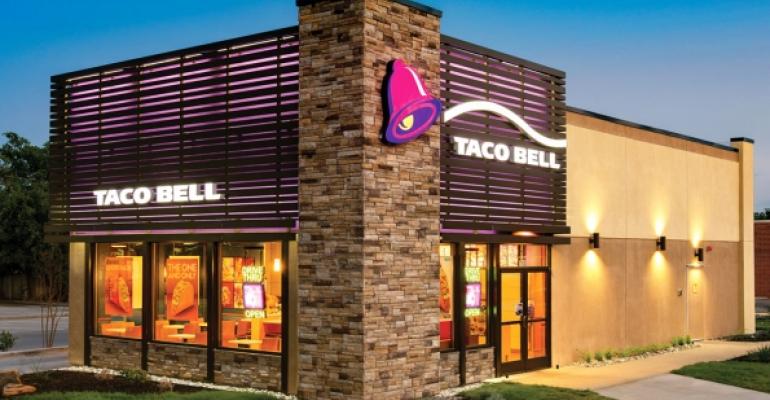Taco Bell’s sales slump didn’t last long.
Same-store sales at the Mexican quick-service chain fell 1 percent in the second quarter ended June 11, parent company Yum Brands said this week. That was the first decline in more than three years for the chain.
But Taco Bell quickly turned that around, Yum executives said on the company’s earnings call Thursday. Same-store sales improved as the second quarter went on and have been positive in the first five weeks of the third quarter.
“We’re pleased with the way the quarter has opened,” Yum CEO Greg Creed said.
He noted that the 1 percent decline in the second quarter still gave the chain a two-year same-store sales number of 5 percent, better than the overall quick-service sector. But, he added, “We expect more out of Taco Bell given the strength of the brand.”
Creed said that the chain’s $5 Cravings deal helped generate traffic in the quarter. He also noted that the “challenging” U.S. restaurant environment, one marked by heavy discounting by major quick-service chains, plays into Taco Bell’s strengths. Taco Bell typically scores well in consumer surveys on its ability to innovate and give consumers value.
“The Taco Bell brand is well positioned to succeed in a challenging environment,” Creed said.
Taco Bell’s same-store sales decline was “a transactions miss,” Creed said. That is likely due to heavy competition over price in the quick-service sector, though in recent months the entire business has been relatively weak. Quick-service traffic was down 1.6 percent in May, according to the MillerPulse.
Most of Taco Bell’s nearly 6,500 locations are in the US. But the company is working to accelerate international growth, much like its sister concepts KFC and Pizza Hut, both of which have a healthy presence in international markets. “We believe this could be a meaningful driver of long-term growth,” Creed said.
Here comes the China spinoff
Yum Brands is working toward a spinoff of its China operations by Oct. 31 of this year. Yum has 7,246 restaurants in China, most of which are company-owned — and so Yum as a company depends heavily on its China business for sales and profits.
After the spinoff, Yum China will be a franchisee of Yum Brands, which will be a predominantly franchisee-owned company with plans to have franchisees operate 96 percent of its locations.
Yum China will be spun off to shareholders. And executives on the earnings call dismissed plans to sell the business or use some other mechanism to split the company into two pieces. “We think a separation and spinoff is the best way to maximize shareholder value,” Creed said.
Same-store sales were flat at Yum China, including an 11-percent decline at Pizza Hut Casual Dining there, but offset by better-than-expected 3-percent same-store sales growth at KFC there.
Yet executives said on the call that Pizza Hut Casual Dining has turned positive in recent weeks. Improving conditions in China, in particular, led the company to boost its operating profit outlook for the year to “at least” 14 percent from 12 percent.
Investors drove the stock higher. Yum stock was up 3 percent Thursday.
Micky Pant, CEO of Yum China, said that the company has built fewer Pizza Hut Casual Dining restaurants because of weakness there, and had slowed KFC after two years of difficulty. Yet, “we continue to build aggressively” in China. He also said that new locations continue to generate strong returns.
“Our new unit returns are very high,” Pant said. “We are very confident we are not over-expanding at all in smaller cities.”
Pizza Hut potential
Same-store sales at Pizza Hut grew 1 percent in the U.S. and flat overall. That was “softer than expected,” Creed said. He suggested that the chain’s competitors responded aggressively in the quarter to Pizza Hut’s success.
Still, he said, the company continues to generate transaction growth. And he said there is some potential in the use of local, data-driven marketing that complements the chain’s national message. Company-owned locations generated higher sales, and better traffic, than the system as a whole.
“That’s a clear indication that we’re on the right track,” Creed said.
KFC will be biggest
Once Yum spins off China, its biggest division will be KFC, which is currently on a better trajectory.
Same-store sales rose 2 percent in the quarter and are up 4 percent on a two-year basis. In the U.S., same-store sales have increased eight consecutive quarters and rose 5 percent on a two-year basis.
The company is opening a lot of units around the world, too. “We open three new KFCs a day,” Creed said, “or one every eight hours.”
Contact Jonathan Maze at [email protected]
Follow him on Twitter at @jonathanmaze

